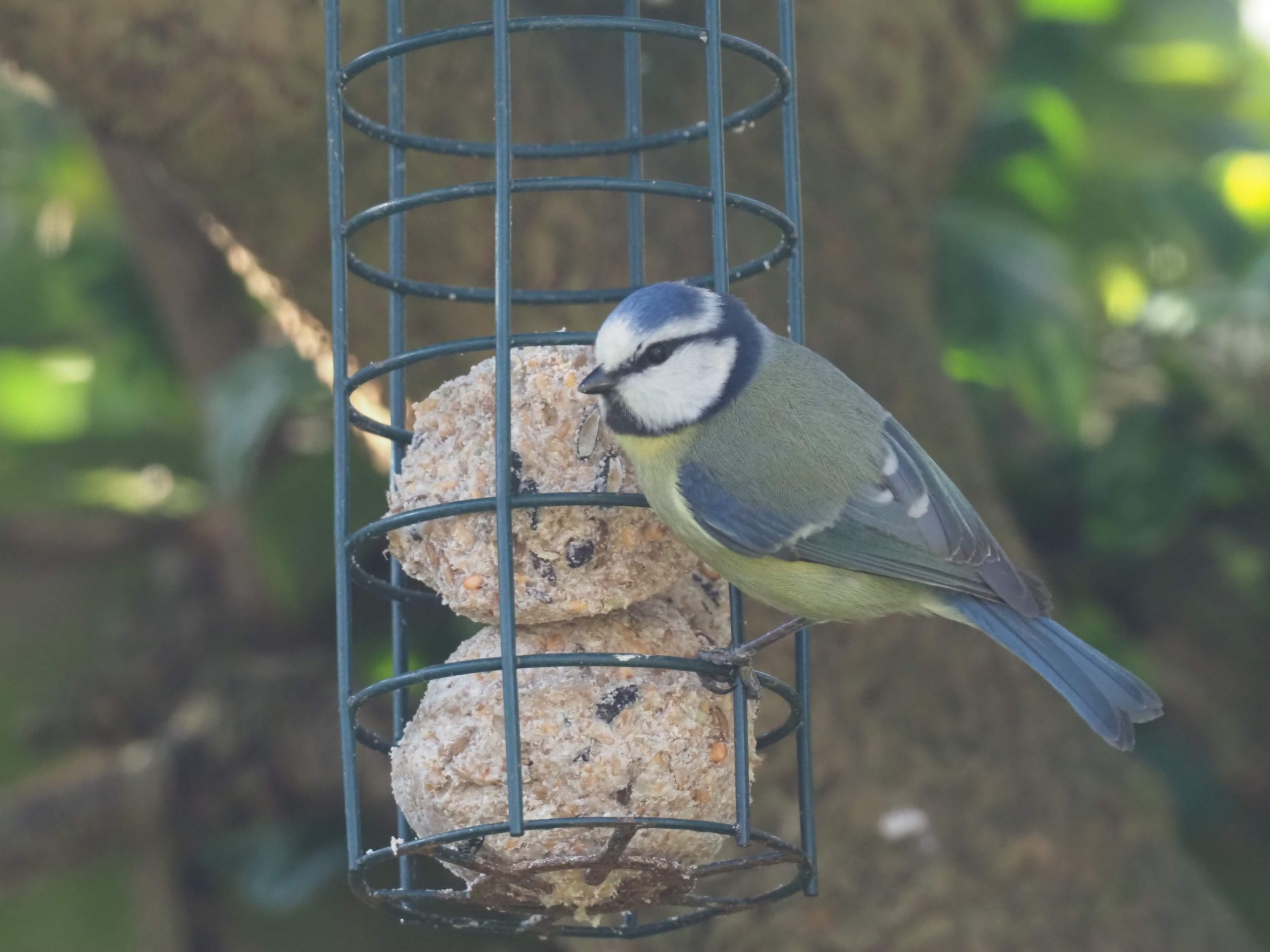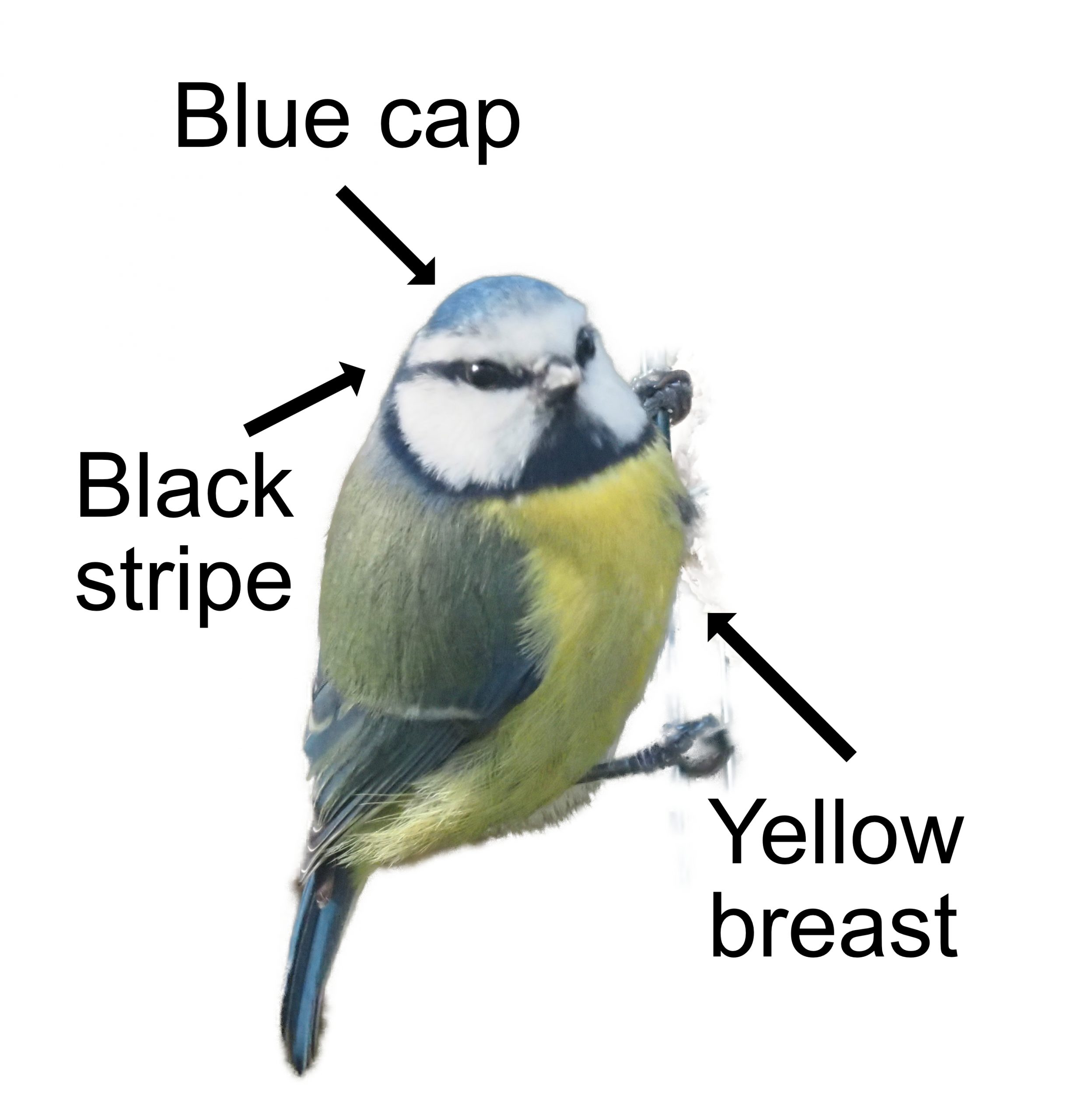
It is funny, you see them all the time (there are about 3.5 million across the British Isles) but struggle to accurately describe a Blue Tit. They are smaller than a House Sparrow, have a tiny, dark bill, a blue cap, a white face with a black eye stripe, and a yellow chest with a weak dark vertical line down their belly. There is a white wing bar but you will struggle to see it unless they keep very still. Their song often consists of two or three really high-pitched notes followed by two or three lower ones, ‘tzi-si-du-du’ almost sounding like “I am Blue Tit”. You will hear them sing most frequently from the start of the year to early summer (when they are moulting so don’t want to attract any attention). Their little ditty only lasts 1.5 seconds, so not the greatest of the singers in the hedgerow. They sound the alarm with a churring ‘mini-Magpie’ call that is difficult to tell apart from a Great Tit’s so it could be either when you hear it.

Blue Tits are acrobatic feeders and are quite happy to be upside down. They feed on insects, spiders, caterpillars, fruit, seeds, and fat balls. They avoid competing with Great Tits and Coal Tits by feeding on different trees or different parts of trees due to their relative sizes and which part of the tree will support them.
From the rear (as you will often see them flying out of hedges away from you), they have greyish, blueish backs and lack any white sides to their tails which, if you are sharp sighted, is how you can tell them from a Great Tit speeding away. The flight is fast and direct, stopping dead at their destination.
Blue Tits look their best from early in the year when they chase together along the hedgerows. They pair up for egg laying in late April to early May, nesting in holes in trees or in nest boxes (which are important as there often aren’t enough holes in trees to go round). They produce 6 to 16 eggs (wow!) which hatch after 14 days and the young fly about 21 days later. Second broods are rare as it is knackering bring up that many young. They generally stay local and don’t migrate much except their continental cousins who may come over in winter. It may be the same Blue Tit that uses your nest box over several years.
The best way to help Blue Tits is by putting up nest boxes and feeders in your garden and making sure you clean the nest boxes each year to stop the spread of any parasites.
Like most birds, Blue Tits can see ultra-violet (UV) light. Studies have shown that the blue crown on their heads glows brightly under UV light. The brightness of the feathers is thought to provide a variety of signals - for instance: male Blue Tits have been shown to choose females with brightly coloured crowns as they make fitter mothers - and look sexier. Their Latin name is ‘parus caeruleus’ which means ‘tit sky blue ’. Spot on.